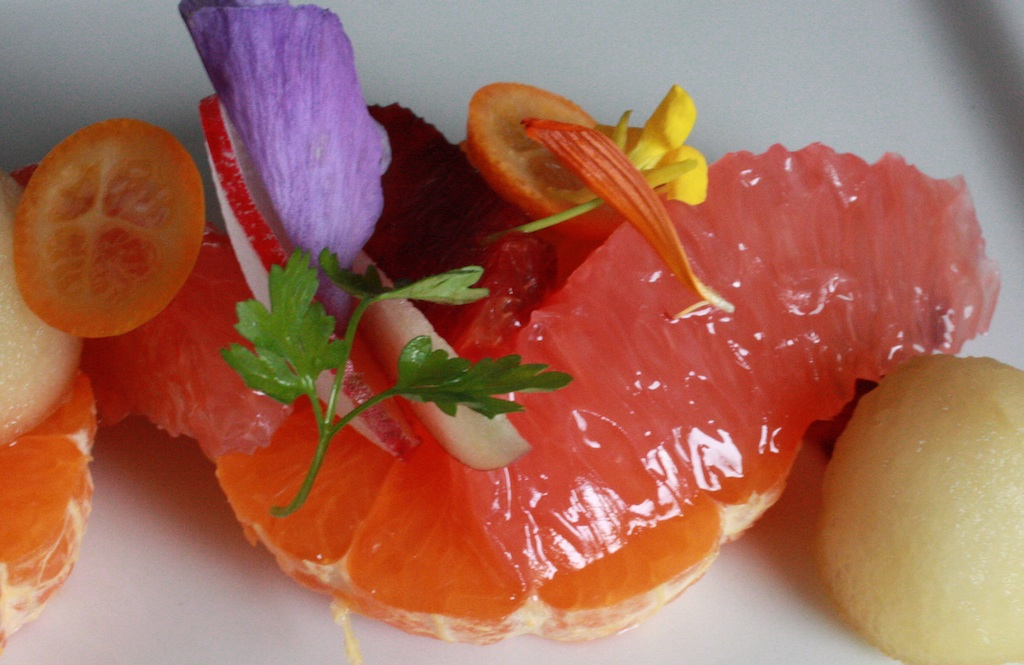Wednesday at the Barn
Dish of the Week
The Cheese Course
The Cheese Course at Barndiva is the perfect way to spend an afternoon in the gardens with a glass of wine, but we love to serve it as they do in Europe, after the salad course and just before (or in lieu of) dessert. With due respect to local sourcing we have always searched far and wide when it comes to serving artisan cheeses. It's important to keep age old cheese making traditions alive wherever you find them, and cheese is one of the few things you can enjoy that most truly reflects the taste of the land where an animal has grazed. A goat cheese by any other name does not taste the same! When we do source locally, we often return to Cowgirl Creamery, who in addition to importing artisan cheeses from all over the world produce their own exquisite selections. Mt. Tam Cheese is a soft cow's milk cheese made from organic milk produced in Marin County. It has a bloomy rind, a firm buttery texture and is aged about 3 weeks.
Our favorite condiment to eat with cheese is pure honeycomb. Hector's Honey is produced just a few miles from our restaurant.
In Spring we pair cheese with bright fruit: a slice of kumquat, rhubarb, delicate citrus, and edible flowers. This week Chef lightly poached field rhubarb in a touch of grenadine bitters to help the natural red 'pop' a bit.
We caramelize walnuts to balance the earthiness of the cheese and the tartness of kumquat, rhubarb and citrus. We add, as a final grace note, yellow blue and russet pansies from our garden.
In the Gallery
Manok is a local talent who has been painting in Sonoma for over a decade, but while she truly captures the bucolic heart of the gently rolling landscapes that surround us, it's easy to see traces of a nomadic life that took her from Laos, where she was born, to Paris, where she worked for Kenzo for many years. It's something in the way she can make the most normal forest, field or river feel exotic, using a range of colors imbued with light that brings Turner to mind. Yes, her skies are that remarkable. Layered texture comes from exclusive use of a pallet knife, but the sly sense of humor she brings to the natural order of the universe is, we suspect, all her own. In addition to the work we have on view in the gallery, her work can be seen in Diavolo Restaurant in Geyserville.














